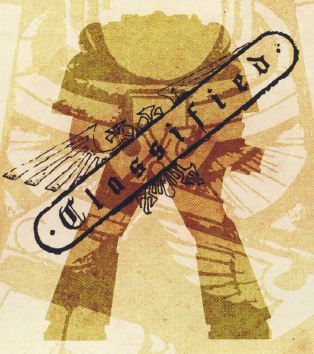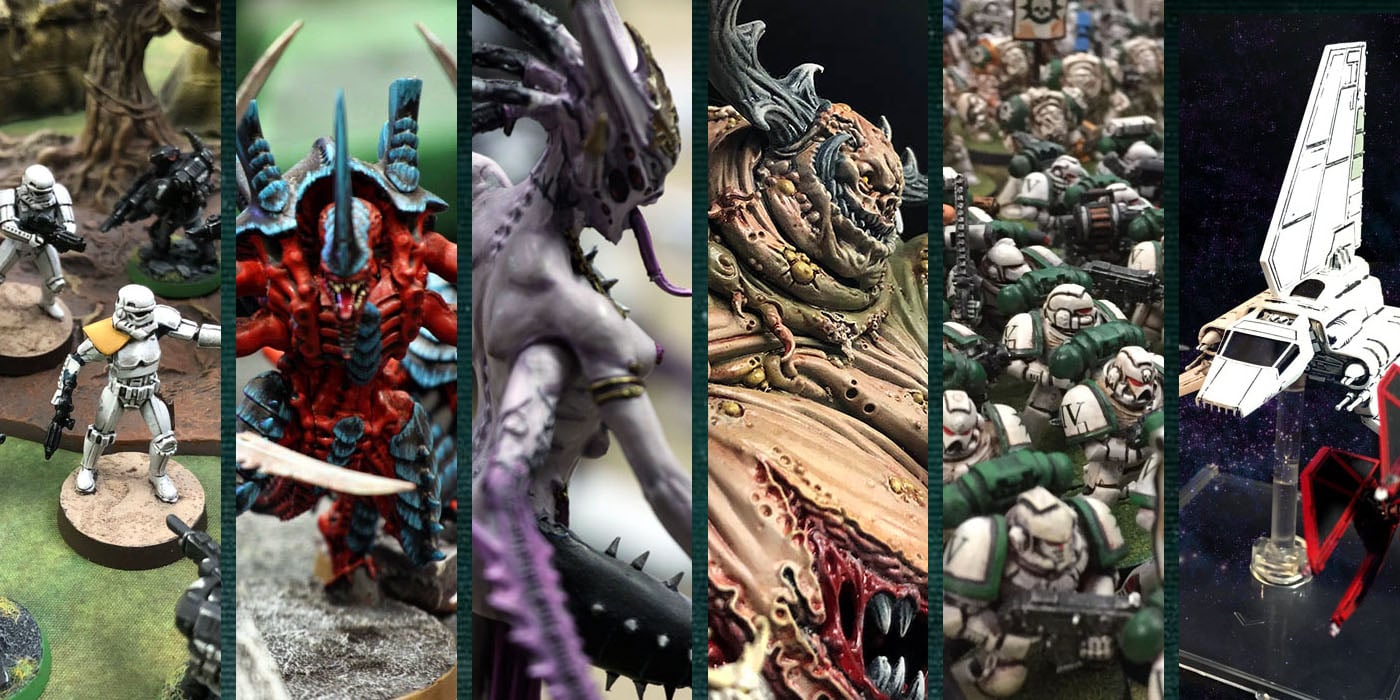40k Lore: Legions II & XI
6 Minute Read
Feb 25 2011

Advertisement
Who were they? What happened to them?
Ok, so this is fairly old hat in the 40k community, anyone who even glanced at their Space Marine homework noticed that two legions are erased from the records and no information whatsoever is given on them. Now setting aside the fact that these spaces were originally left “blank” by GW to give players and writers something to fill in the future, there are a million and one ideas floating around the internet to explain this mystery and over the years various ideas have surfaced and certain little scraps have been given in various sources. We now know more than we used to (i.e. nothing) about these legions, but still very little. What we do know is insufficient to give any solid answers, however we can draw some conclusions.
First and foremost we know that production of all twenty primarchs proceeded apace until they were scattered. Furthermore, we can assume that as the numbers attached to each legion represented the order in which they were produced the 2nd and 11th Legions of Astartes must have been produced as well (as it seems unlikely they would be assigned numbers before lower than actually completed legions and yet not created). In their respective warp visions/travel through time both Horus and the Gol Vorbak seemed particularly effected by seeing the developing 2nd and 11th primarch, and Horus muses upon the unfulfilled promise of the 11th primarch and damages his pod (though the effect upon reality that actions in his vision had are unclear at best). By the time of the Heresy it seems evident that the absence of the 2nd and 11th primarchs is an accepted fact, and not the cause of much remark any longer. Of the 20 statues of the primarchs in the Imperial Palace at the time of the Heresy the 2nd and 11th are empty and in Dorn’s musings have apparently been that way for some time (showing that whatever happened to them occurred well before the Heresy and was not directly connected to it), however curiously enough the statues of the traitors are still present, though shrouded at the time. It is difficult to see why they would be removed while the demonstrated traitors are not.
One possible explanation might be secrecy, it is evident that most Imperial citizens are unaware of the fate (or perhaps even the existence) of the 2nd and 11th primarchs, in the few instances where they have been confronted (either directly or obliquely) by this revelation they seem puzzled or fundamentally to not understand what they are exposed to, as if the information is so alien to their world view as to be irreconcilable. It seems that the fate of these two legions and their primarchs is known only among the primarchs, the Emperor, and a handful of the most rarefied men and women in the Imperium’s inner circle such as the Malcador. Perhaps the traitors would have received similar treatment had their open rebellion made it functionally impossible to simply erase them from history. This very erasure is itself curious, it suggests one of two things; that the actions taken by the primarchs which lead to their erasure where so heinous as to warrant the obliteration of their very memory, or that knowledge of their fate was something that would have damaged the Imperium so fundamentally that it had to be covered up.
Whatever the case, the arbiter of such judgment could only have been the Emperor, indeed both Magnus and Lorgar as much as stated that this, citing the “terrible fury of the Emperor” and the potential for it to see a legion “erased” from memory. What is more, there has recently even been a suggestion on the form that this censure took, as Russ remarks (with what might be described as dark humor) that legion fighting legion (and more specifically the Wolves acting as agents of censure for other legions) is not at all and unprecedented act at the time of the Burning of Prospero. What actions might have precipitated the Emperor’s wrath in such a way is difficult to understand, given the fact that even those who were privy to the fate of these legions seemed fundamentally shaken by the rebellion of Horus and his followers it seems unlikely that they committed outright rebellion, else they would not have regarded the rebellion of a primarch as being as inconceivable as they repeatedly attest. It is particularly interesting and notable that Rogal Dorn in very short order mused upon the 2nd and 11th and upon the perceived impossibility of a primarch turning against his father and brothers. In addition, the fates of these two primarchs are referred to in terms of tragedy rather than crime, almost with pity or wistfulness rather than the anger or recrimination shown towards the traitors.
Despite all the mystery that already exists, perhaps the greatest enigma of all in this episode is the fate of these two primarchs and their Astartes after the fact. From comments made by Gol Vorbak members it seems that the Astartes from these legions may well have been absorbed by the Ultramarines, though it is also noted that this is only a theory citing the fact that the Ultramarines numbers rapidly eclipsed all other legions around the same time as the 2nd and 11th met their fates. This is very suggestive if true, as it is hard to imagine traitors or corrupted Astartes would be welcomed into the Imperial fold en mass rather than punished or exterminated. Furthermore, it implied that these legions met their fate all but simultaneously and therefore were likely related. It is also curious to note that the missing primarchs are always (and almost painstakingly) referred to as “missing,” “lost,” or “absent” rather than “dead.” As further substantiation even by the time of the Heresy the 20 primarchs are referred to in the present tense; as a case in point Dorn (around the same time he considers the missing statues and the impossibility of a primarch turning) compares himself to the only 20 individuals in the galaxy his equal in raw power and ability, his father and 19 primarch brothers, demonstrated that at the time he still has 19 brothers.
Now, as I’ve said I do not believe there is enough to make any kind of definitive pronouncement or even guess about the fate of these two legions and their primarchs, but I would like to note that I have a partial theory of my own. I do not believe the missing primarch led their legions in open defiance and war against the Imperium, while in a vacuum of information this seems easiest to reconcile what little we do seems to go against this. Yet it would seem that the Wolves might well have somehow been involved in action (as instruments of the Emperor’s censure) against them. Perhaps these legions went to war against each other for some reason, some personal feud that blinded them to their duty and set them against each other, both technically maintaining their overall loyalty to the Imperium but fighting their brothers even after ordered to stand down. In judgment the Emperor dispatched Russ and the Wolves to capture their primarchs (which these legions would have resisted). As punishment these unknown primarchs were stripped from command, erased form memory and imprisoned in shame (rather like the notorious Man in the Iron Mask) where they may even remain to this day. Their warriors were given the chance to redeem themselves by serving in the most regimented of all legions, far on the fringe on Imperial space.
References:
Codex: Space Marines
The Horus Heresy series (notably Horus Rising, The Lightening Tower, A Thousand Sons, First Heretic, and Prospero Burns)
What do all of you think of this age old 40k question? Do you have your own theories?
If you have a favorite corner of the 40k lore that would like to see featured, or just a lore question you think would interest the community, let me know, you can even PM me on the forum if you like. New ideas are always welcome.
Author: Just_Me
Advertisement






